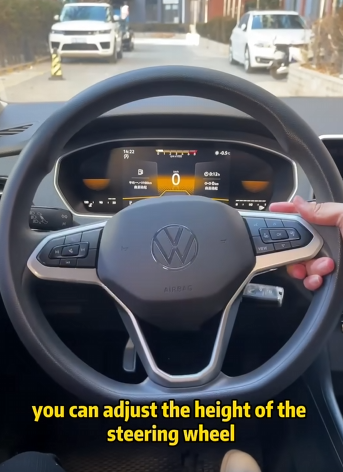
The engine check light, also known as the “Check Engine Light” (CEL) or “Malfunction Indicator Light” (MIL), is a warning light found on the dashboard of most modern vehicles. Its purpose is to alert the driver to potential issues with the engine, exhaust system, or other critical components of the vehicle. While the light can signify anything from a minor issue to a more serious problem, many drivers may feel frustrated when they see it lit up. Understanding how to remove or reset the engine check light is important, but it’s equally crucial to understand what causes the light to turn on and whether it’s safe to drive with it illuminated. Here’s a comprehensive guide on how to address the check engine light issue.

1. Understanding the Check Engine Light
The check engine light is part of your car’s On-Board Diagnostics (OBD) system. This system constantly monitors the performance of your engine and other crucial components. When the system detects an issue, it triggers the check engine light to inform you that something is wrong. The OBD system can generate fault codes that describe the problem, which can be read by a mechanic or with a code reader.
There are two types of check engine lights:
- Solid Check Engine Light: This means that the OBD system has detected an issue, but it’s not an emergency. The vehicle may still be safe to drive, but you should address the issue soon.
- Flashing Check Engine Light: This indicates a serious issue, typically related to misfiring in the engine, which could damage the catalytic converter. If the light is flashing, it’s essential to stop driving the car immediately and get it checked by a mechanic.
2. Why Is the Check Engine Light On?
There are many reasons why the check engine light might turn on. Some of the most common reasons include:
- Loose or Faulty Gas Cap: A loose or damaged gas cap can trigger the check engine light. This issue is easily fixed by tightening the gas cap.
- Faulty Oxygen Sensor: The oxygen sensor monitors the level of oxygen in the exhaust and helps control the engine’s fuel mixture. A faulty sensor can decrease fuel efficiency and increase emissions.
- Catalytic Converter Issues: A malfunctioning catalytic converter can lead to poor engine performance, decreased fuel efficiency, and increased emissions.
- Worn Spark Plugs or Wires: Spark plugs ignite the air-fuel mixture in the engine. If they are worn out, the engine may misfire, triggering the check engine light.
- Mass Air Flow Sensor Issues: This sensor measures the amount of air entering the engine to ensure the right fuel-to-air mixture. If it malfunctions, it can affect engine performance and fuel efficiency.
- Exhaust Gas Recirculation Valve Problems: The EGR valve recirculates exhaust gases back into the engine to reduce emissions. A malfunctioning EGR valve can cause rough idling or stalling.
3. Diagnosing the Issue
Before attempting to remove or reset the check engine light, it’s important to diagnose the problem causing it. This can be done using an OBD-II (On-Board Diagnostics) scanner. These scanners are readily available and can be used to read the fault codes stored in your car’s computer system. Many auto parts stores offer free code-reading services, or you can purchase a scanner for personal use.
Once the OBD-II scanner is connected to your car, it will retrieve the fault codes from the car’s computer. These codes will help identify the specific issue. For example, a code P0171 might indicate a lean fuel mixture, while P0420 could point to a catalytic converter issue. After identifying the issue, you can determine if it’s something simple like tightening the gas cap or something more complicated that requires professional repair.

4. How to Remove the Engine Check Light (Resetting the Light)
Once the issue has been identified and resolved, you may need to reset the check engine light. Here are several methods for doing so:
Method 1: Use an OBD-II Scanner
The most straightforward way to reset the check engine light is to use an OBD-II scanner. Here’s how:
- Plug the OBD-II scanner into the diagnostic port under the dashboard, usually near the driver’s side.
- Turn the ignition to the “On” position without starting the engine.
- Follow the instructions on the scanner to read the fault codes.
- Once the codes are read, the scanner will often provide an option to clear or reset the codes.
- After clearing the codes, the check engine light should turn off.
Method 2: Disconnect the Battery
If you don’t have an OBD-II scanner, you can disconnect the car’s battery to reset the system. Here’s how:
- Turn off the car and open the hood.
- Use a wrench to disconnect the negative terminal (marked with a minus sign) of the car’s battery.
- Wait for about 15 to 30 minutes to allow the car’s electrical system to reset.
- Reconnect the battery terminal, start the car, and check if the light has gone off.
Note: While this method will reset the check engine light, it will also reset other car settings like the radio presets and clock.
Method 3: Drive the Car
In some cases, the check engine light may turn off automatically after a certain number of driving cycles. If the issue has been resolved, the car’s OBD system may detect that everything is functioning properly and the light will reset itself. Typically, this could take anywhere from a few days to a week of normal driving.
Method 4: Visit a Mechanic
If you’re unsure about how to reset the light or if the issue persists, it’s best to take your car to a mechanic. They will have the tools and expertise to diagnose and fix the problem and ensure that the check engine light is reset properly.

5. When Should You Not Reset the Check Engine Light?
It’s important to note that resetting the check engine light doesn’t fix the underlying issue. If you’ve simply reset the light without addressing the problem, it may turn on again in the future. Here are a few situations where you shouldn’t reset the check engine light:
- If the Light is Flashing: A flashing light indicates a serious issue, often related to engine misfires. Resetting it without fixing the problem can lead to further damage to the engine or other components, such as the catalytic converter.
- If You Don’t Know the Cause of the Problem: If you haven’t diagnosed the issue and fixed the underlying problem, resetting the light will only temporarily clear the warning. You need to address the issue to prevent further damage.

6. Conclusion
The check engine light is a valuable tool for keeping your car’s engine and other critical systems in check. It’s essential to pay attention to the light and take action when it comes on. While resetting the check engine light is possible, it should only be done after addressing the underlying issue. Whether you use an OBD-II scanner, disconnect the battery, or visit a mechanic, it’s crucial to identify and fix the problem to avoid costly repairs in the future.
If the light remains on after fixing the issue, it could be a sign of a more complex problem. In that case, getting professional help is the best course of action. Remember, the check engine light is there to protect your vehicle and ensure its long-term health, so don’t ignore it!



